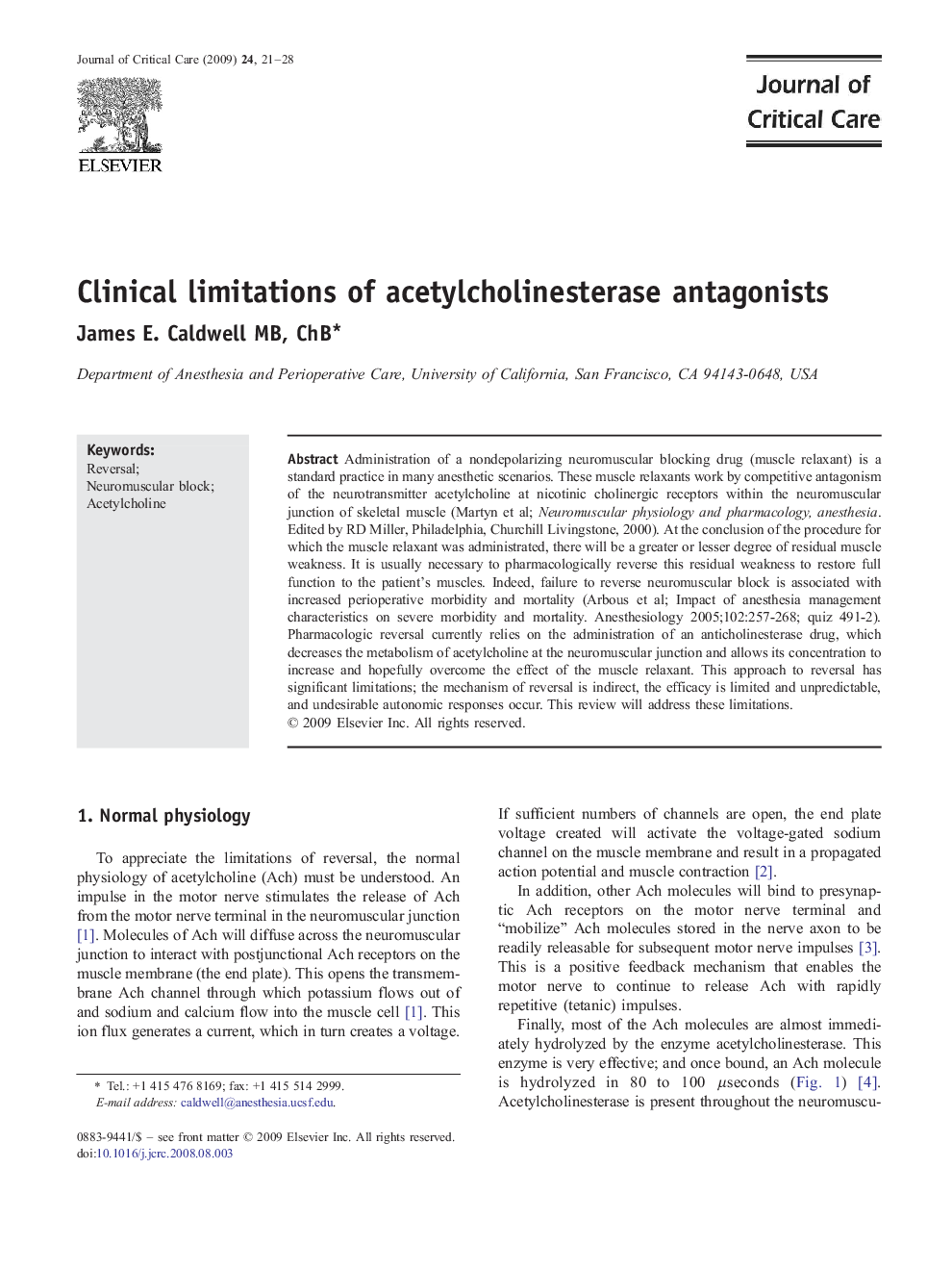| کد مقاله | کد نشریه | سال انتشار | مقاله انگلیسی | نسخه تمام متن |
|---|---|---|---|---|
| 2765300 | 1150960 | 2009 | 8 صفحه PDF | دانلود رایگان |

Administration of a nondepolarizing neuromuscular blocking drug (muscle relaxant) is a standard practice in many anesthetic scenarios. These muscle relaxants work by competitive antagonism of the neurotransmitter acetylcholine at nicotinic cholinergic receptors within the neuromuscular junction of skeletal muscle (Martyn et al; Neuromuscular physiology and pharmacology, anesthesia. Edited by RD Miller, Philadelphia, Churchill Livingstone, 2000). At the conclusion of the procedure for which the muscle relaxant was administrated, there will be a greater or lesser degree of residual muscle weakness. It is usually necessary to pharmacologically reverse this residual weakness to restore full function to the patient's muscles. Indeed, failure to reverse neuromuscular block is associated with increased perioperative morbidity and mortality (Arbous et al; Impact of anesthesia management characteristics on severe morbidity and mortality. Anesthesiology 2005;102:257-268; quiz 491-2). Pharmacologic reversal currently relies on the administration of an anticholinesterase drug, which decreases the metabolism of acetylcholine at the neuromuscular junction and allows its concentration to increase and hopefully overcome the effect of the muscle relaxant. This approach to reversal has significant limitations; the mechanism of reversal is indirect, the efficacy is limited and unpredictable, and undesirable autonomic responses occur. This review will address these limitations.
Journal: Journal of Critical Care - Volume 24, Issue 1, March 2009, Pages 21–28